What Happens Inside a Shinto Prayer Ritual?
An Invitation to Feel Shinto, Not Just Understand It
A Step into the Sacred
In my previous post, we explored the simple yet profound gestures of bowing and clapping at a Shinto shrine—and the deep cultural concept of ma, the sacred space between movements.
This time, I’d like to invite you a step further into the sacred. The kigansai is a formal prayer ritual held inside the shrine’s worship hall—a more intimate way to meet the kami.
Even if you have no plans to visit Japan, I hope this article feels like a quiet form of participation—a way to sense the ritual’s atmosphere. This is more than a guide; it is an offering of presence: a way to help you feel Shinto, not just understand it. I’ll also try to offer a way for you to intuitively grasp one of the most important concepts in Shinto—kegare, or spiritual impurity.
Whether you’re deeply familiar with shrine practice or encountering it for the first time, I invite you to read gently, as if you were stepping with bare feet into the hush of the sacred.
What Is a Kigansai?
The kigansai ceremony is commonly referred to by the general public as gokitō (ご祈祷) or oharai (お祓い). The honorific prefixes go and o in these terms are both written with the kanji 御, which expresses respect and formality.
Gokitō literally means “prayer,” and emphasizes the act of offering one's wishes to the kami. Oharai, on the other hand, means “purification,” and highlights the cleansing aspect of the ritual.
A kigansai includes both purification and prayer. In practice, people often use the terms based on nuance: oharai for removing misfortune (yakuyoke), and gokitō for requesting blessings or marking life transitions (jinsei girei).
So, for example, if you wish to arrange a kigansai for Shichi-Go-San—a traditional celebration for children aged 3, 5, and 7—it would be most natural to say, “I’d like to receive a gokitō for Shichi-Go-San,” when speaking to the miko or shrine staff at the prayer reception desk.
「御祈祷受付」refers to the desk where visitors can apply for a formal Shinto prayer ritual (gokitō). These rituals are open to anyone who can follow the proper etiquette of shrine worship, regardless of whether they believe in the kami or not—including visitors from overseas. This reflects a uniquely Japanese cultural view: ‘Whether you believe or not, the kami are there.’
Making a Prayer Request
A kigansai is performed by a Shinto priest with the person offering the prayer. The process varies from shrine to shrine. At the shrine where I serve, rituals are by reservation—offered every 30 minutes between 9 a.m. and 4 p.m.—and conducted for one party at a time. However, in November, when many families come for Shichi-Go-San visits, and in January, the peak season for New Year worshippers, prayers are sometimes conducted in small groups, with priority given to those who have made reservations.
At larger shrines, especially those in tourist areas, no reservation may be needed, and multiple groups may participate together.
The prayer fee varies by shrine, but generally ranges from 5,000 to 10,000 yen. As it is considered an offering to the kami, it is placed in a decorative envelope called a noshibukuro, which is traditionally used for celebratory occasions.
When applying, you’ll be asked to provide your name and address, which the priest will recite in the norito. Even overseas addresses will be pronounced in a Japanized form. Writing your information in hiragana or katakana helps the process go smoothly.
You’ll also choose a prayer category from a list. For travelers, “travel safety” (ryokō anzen) or “safe passage overseas” (tokō anzen) are especially fitting.
Purification: The Ritual Opening
A kigansai begins with a purification rite called shubatsu (修祓). While visitors already purify their hands at the temizuya near the entrance, the kigansai includes a more formal cleansing performed by the priest.
This purification takes place before a temporary sacred object called a himorogi, which may be a wooden wand with white streamers (haraegushi) or a leafy sakaki branch with sacred strips (ōnusa).
The ritual begins as the priest stands before the himorogi and bows in a position called yū, holding this deep bow while reciting the harae kotoba—ancient words of purification. This chant invites some kami of purification to temporarily dwell in the himorogi.
In a previous post, I described my image of the kami as wandering like the wind—coming and going freely through the world and returning to the shrine as they please. In this ritual, the harae kotoba acts as a call to those wandering kami associated with purification, inviting them to reside, just for a while, in the sacred wand.
Once the kami are believed to be present, the priest performs a bowing ritual (two bows, two claps, one bow), then waves the wand three times—left, right, left—above the bowed worshipper.
Using a wand with white paper streamers, the priest gently creates a breeze—without touching the worshipper—and clears away impurity. Just a small movement of air.
What is Kegare (impurity)?
In Shinto, the idea of kegare (a uniquely Shinto idea of spiritual impurity) is very important. But even priests are not given a clear explanation of what impurity really is.
We are expected to feel and understand it through practicing the rituals over time.
So here, I want to share what I’ve come to feel after doing this purification ceremony every day for twenty years.
To me, kegare is like static electricity that builds up in your body when you try too hard in daily life. That “charge” attracts tiny invisible particles, like dust. It’s like iron filings sticking to a magnet. When this dust-like impurity accumulates over time, it can become the cause of physical or emotional imbalance.
The breeze that the sacred wand makes helps release that extra “charge.” Once that is gone, the dust falls away and disappears into the space around us.
Just like bowing creates ma—a respectful space between people—this ritual also uses the space between the priest and the worshipper to let go of impurity.
Being purified in Shinto means returning to a natural, balanced state as a living being.
It’s not about being “morally good or bad.”
Morals can change with time and culture.
But staying balanced and healthy in body and spirit—that’s something all humans share.
In Shinto, purification and cleansing rituals are performed not only for living beings, but also for objects and physical things. I believe this is because Shinto views the world in a way that resonates with quantum mechanics—but I’ll talk more about that another time. For now, just know that even objects receive purification in Shinto.
So, the purification gesture is also performed over the ritual items that will be given to the participant after the ceremony. These items are first purified, then placed before the kami, where they receive divine energy (shin’i) during the ritual.
The Norito: Sacred Words for the Kami
After purification, the priest returns the wand and steps back. Then begins the norito: the prayer introducing you to the kami.
Written in black ink on hōsho (sacred white paper), folded in shichi-orihan (seven and a half folds), the norito is tucked into the priest’s robe and brought to the altar.
The priest bows deeply twice, opens the paper with ritual care, pauses, and recites the prayer in solemn, poetic language.
Norito typically praises the land and the deity, then introduces who you are, where you’ve come from, and your wish. Seasonal or weather references may also be included. Even if you don’t understand classical Japanese, you’ll likely recognize your name and address.
~Phrases Woven into Norito~
“Kyō no ikuhi no taruhi” — “On this fulfilled and auspicious day.”
“Miki” — Sacred sake offered to the kami.
“Mike” — Sacred food offerings.
“Tametsu mono” — Pleasing foods and drinks.
“Tairakeku yasurakeku” — Peacefully and serenely.
“Kikoshimesu” — Honorific verb: to eat, drink, or accept.
“Kashikomi kashikomi mo mōsu” — “With awe and deepest reverence, I humbly speak.”
Silent Reverence and Shared Movement
While the norito is being recited, the worshipper bows and remains still. As the priest finishes the final phrase, kashikomi kashikomi mo mōsu, the priest extends the final syllable in a long, reverent tone, then bows deeply before the altar.
The worshipper lifts their head as the priest rises. At some shrines, the priest gently signals this timing with words like, “Please bow your head” or “You may raise your head now.”
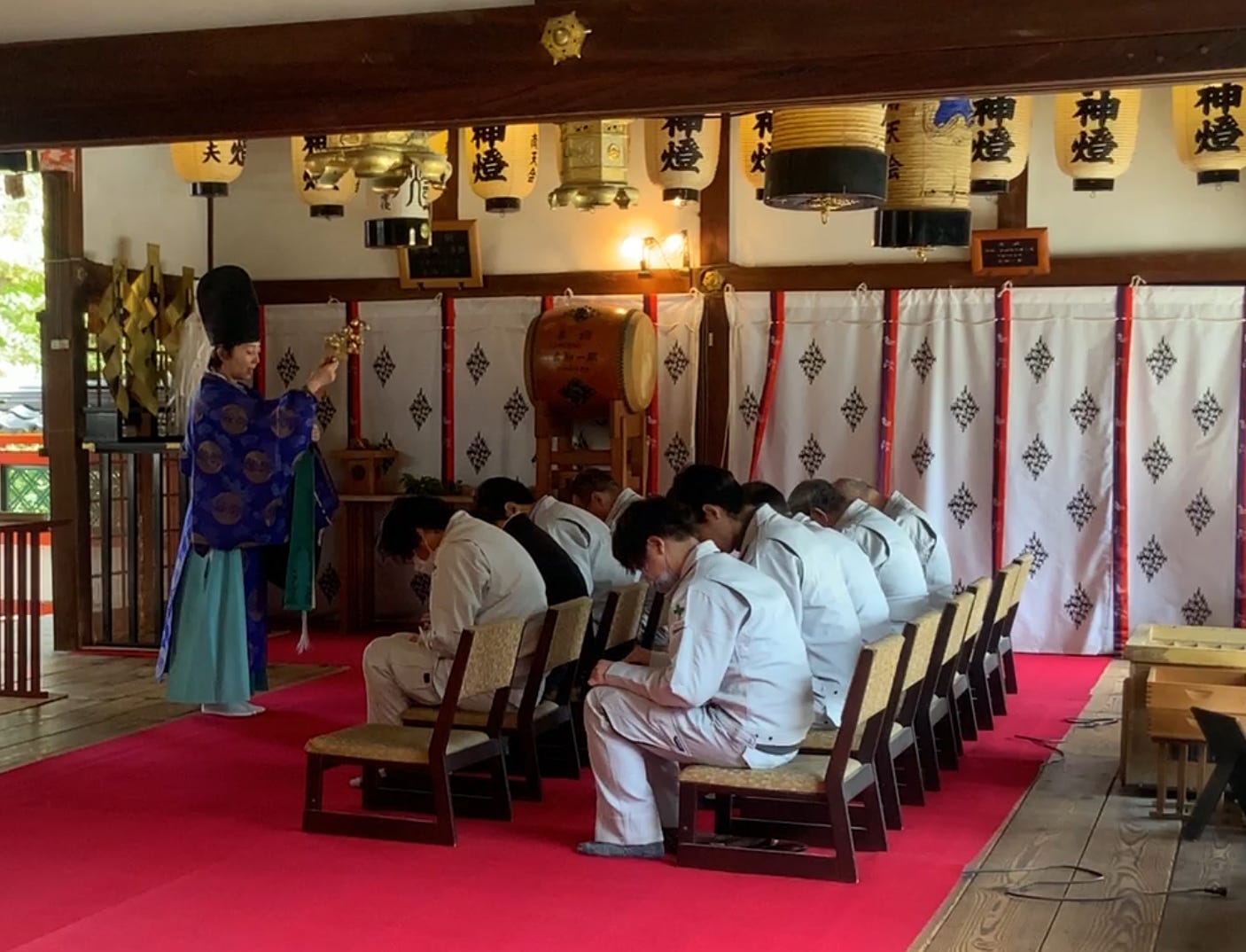
Sacred Sound After the Prayer
Following the norito, a brief piece of sacred music is often played.
This may include soft bells (suzu), a bamboo flute (ryūteki), a reed instrument (shō), or a gentle drumbeat. The music is short and quiet—meant not to entertain, but to carry the prayer into the sacred space.
The Final Offering: Tamagushi Worship
The ritual ends with tamagushi hairei—the worshipper’s offering of a sacred sakaki branch with white streamers.
The priest hands the tamagushi to the worshipper, who raises it respectfully, approaches the altar, rotates it to face the kami, bows once, places it, and then performs two bows, two claps, one bow.
This simple act becomes a personal, silent offering of heart and sincerity.
Closing the Ceremony
A drumbeat signals the end of the ceremony.
The worshipper receives sacred gifts (juyohin), such as an omamori (amulet), ofuda (talisman), or blessed food. In some cases, a cup of sacred sake (omiki) is shared—called naorai, a gentle return from the sacred into the everyday.
Did You Feel Shinto?
How was your experience inside the kigansai? Did something stir in you as you followed the quiet movements and sacred sounds? I hope this post has helped you understand the flow of a kigansai and what it means to participate in one.
From purification to prayer, sacred music to offerings—each part of the ritual is designed to create a moment of quiet connection between you and the kami.
This is a ritual for gracefully grooving with the kami—
not to seal an eternal contract, nor to swear an oath.
It is a fleeting moment in the flowing river of time,
a warm exchange between kami and human—
precious precisely because it cannot last.
Whether you are visiting a shrine in Japan or simply curious from afar, I hope you feel a little closer to this beautiful way of reverence.
As always, I welcome your thoughts, questions, or ideas for topics you’d like to learn more about. Feel free to leave a comment below.
Thank you for reading, and may your path be peaceful and clear.


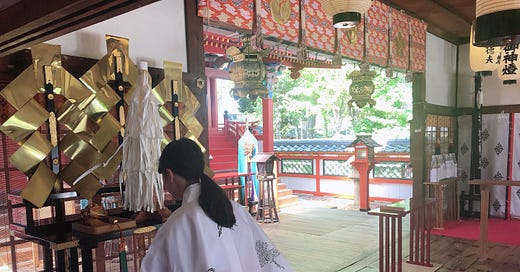



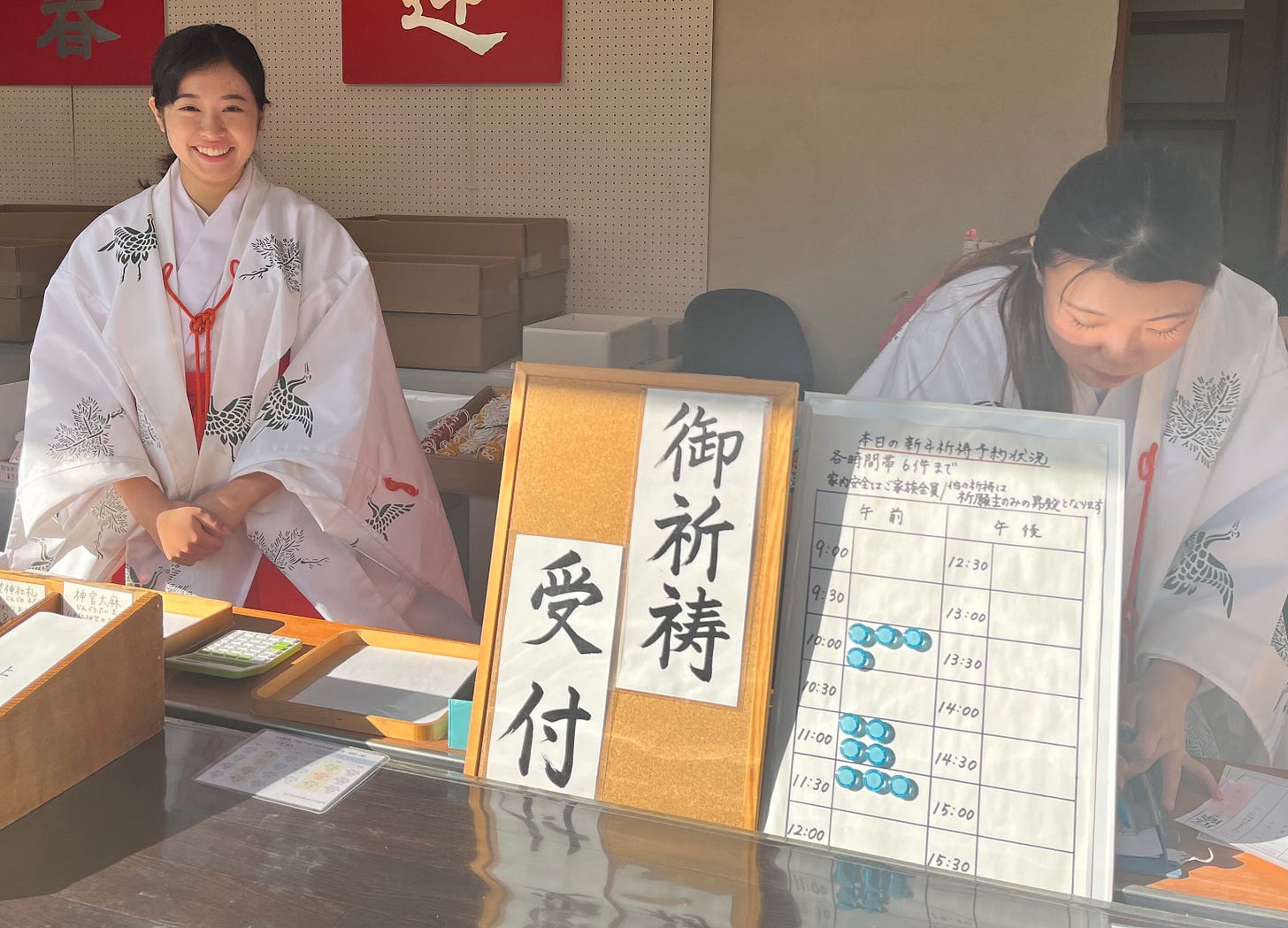
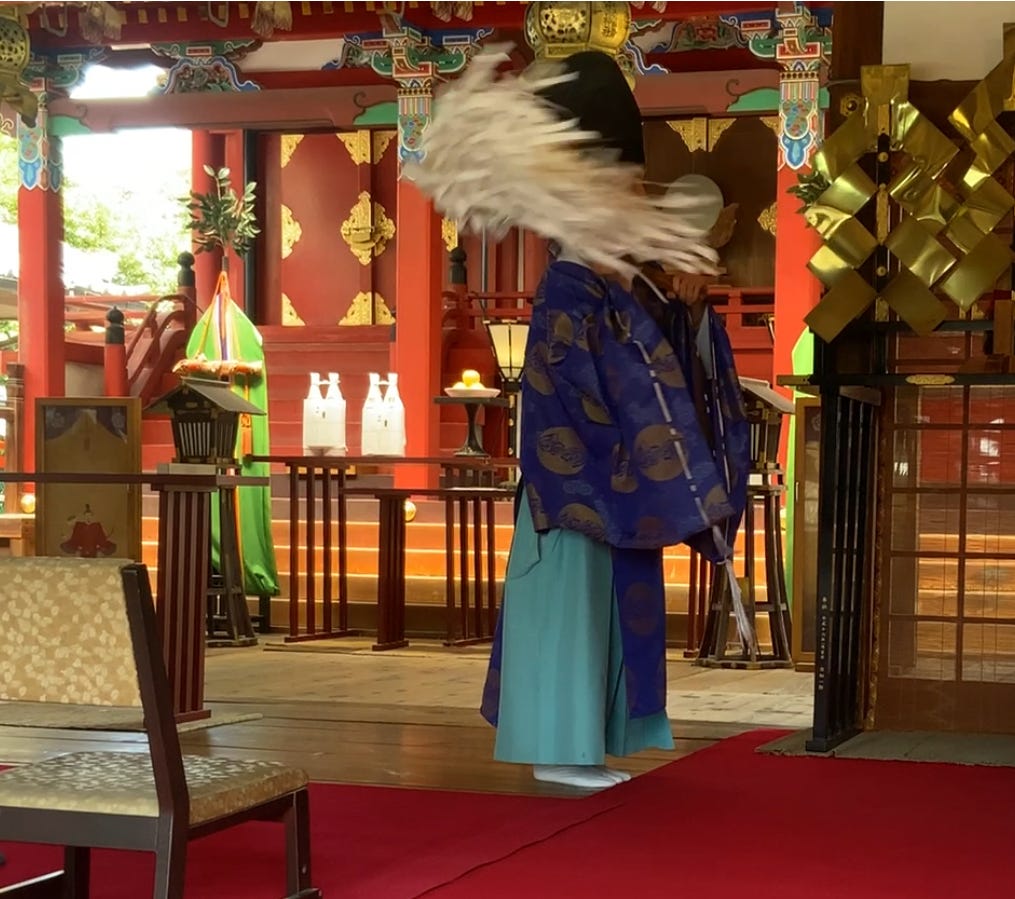

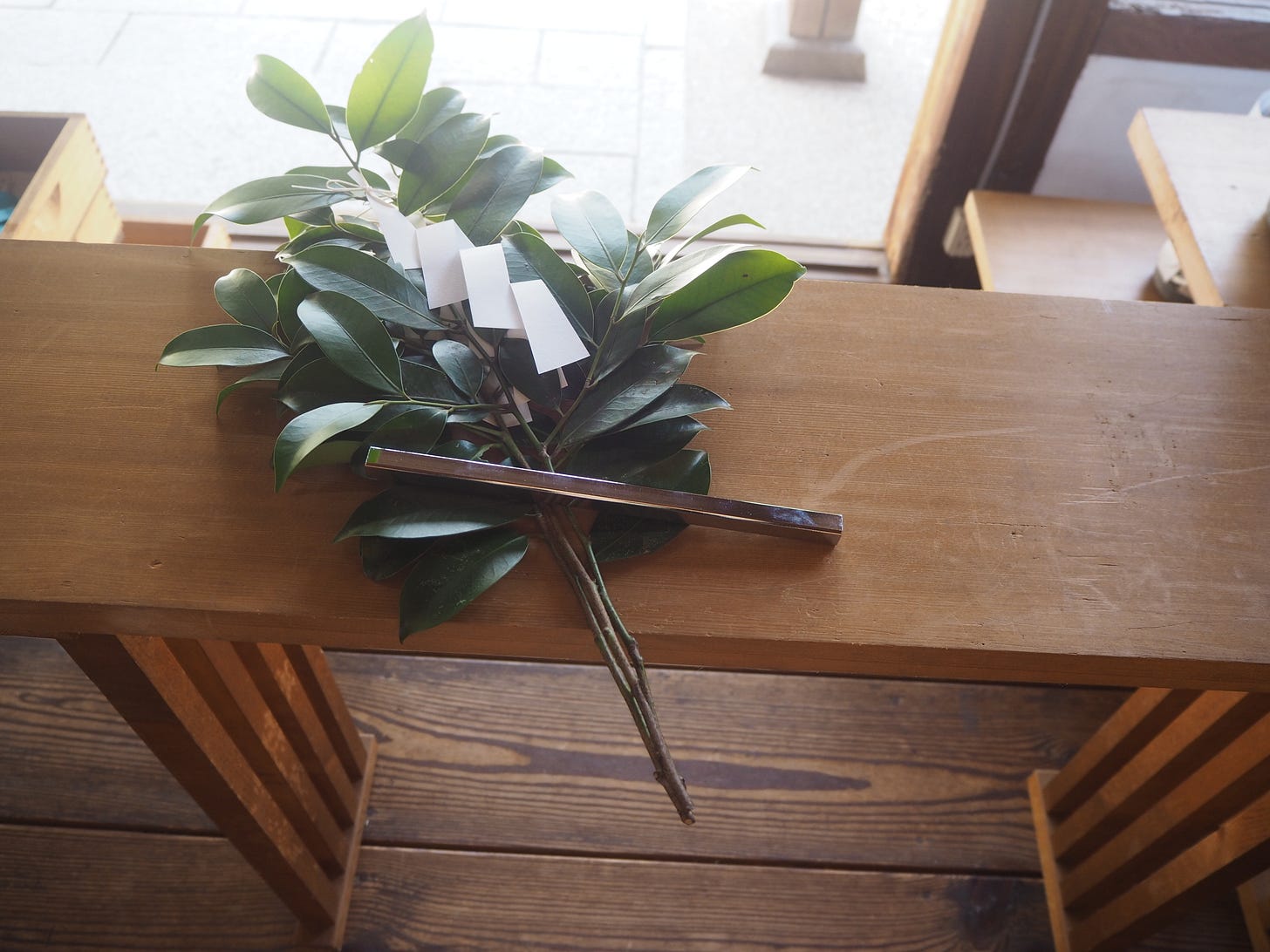
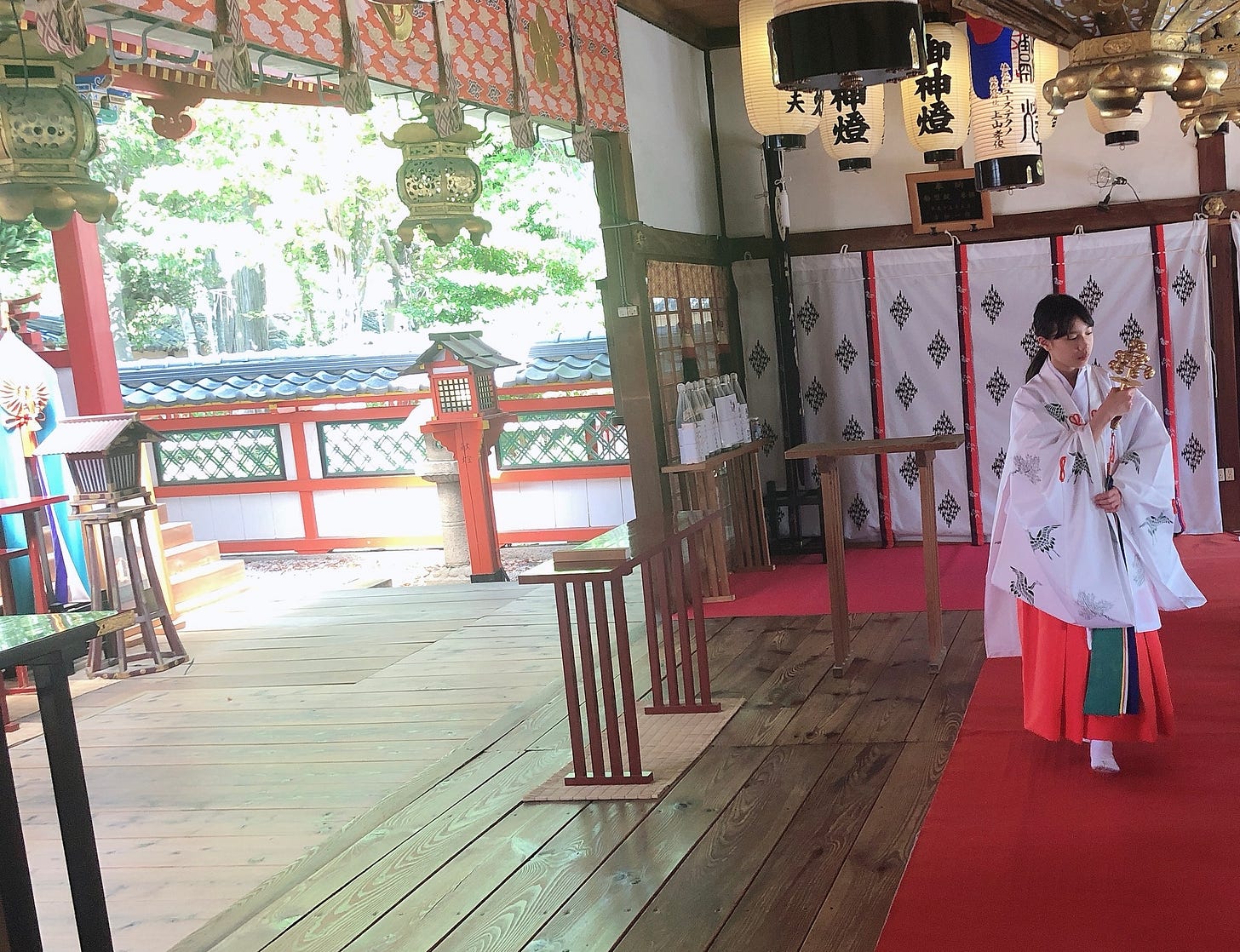
Absolutely amazing article! Thank you for sharing the knowledge 🙇
That was beautiful and evocative. I did indeed feel as if I was in the temple. Thank you!